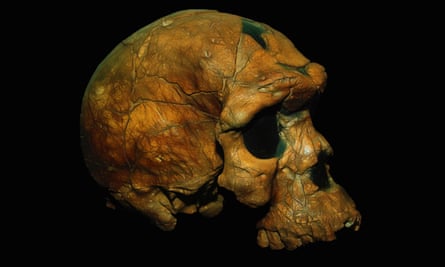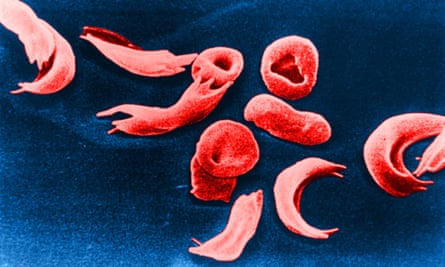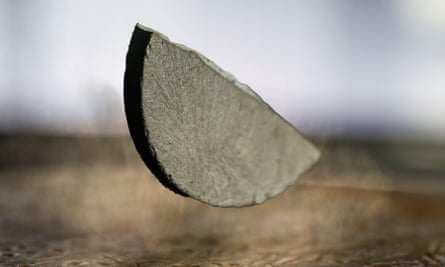The ten supreme science reports of 2023 – chosen by scientists – Guardian

1. India’s lunar lander reaches the black aspect of the moon
Whereas western billionaires were busy sending rockets to house honest for them to shatter and burn, scientists in India were quietly doing one thing nobody had executed earlier than. Their Chandrayaan-3 moon lander became the essential mission to achieve the lunar south pole – an unexplored plight where reservoirs of frozen water are believed to exist. I take into accout my coronary heart soaring when photography of the management room in India unfold spherical social media, exhibiting senior female scientists celebrating their impossible success.
The success of Chandrayaan-3, launched in July 2023, confirmed the world that now not most effective is India a valuable participant in house, nonetheless that a moon lander may presumably maybe maybe also be launched successfully for $75m (£60m). This designate is to now not be sniffed at nonetheless it surely is far more cost effective than most other countries’ budgets for a moon mission.
July 2023 became an extraordinarily busy month for house firsts. It kicked off with the originate of the Euclid satellite tv for laptop, designed to explore black matter and black energy in unparalleled part. Finest a fortnight later, China successfully launched the world’s first methane-fuelled rocket (Zhuque-2), demonstrating a doubtlessly greener design to create house mosey, again at vastly reduced designate.
Two weeks after landing, Chandrayaan-3 became sent to sleep at some level of the very cold lunar night-time, most effective to by no manner bag up, nonetheless it surely had done what it had been sent to create: to detect sulphur on the floor of the moon and to level to that lunar soil is a authentic insulator. With greater selection, lower prices, and greener rockets, it feels adore humanity will be making ready to a singular, more accessible generation of house exploration. Haley Gomez
Haley Gomez is a professor of astrophysics at Cardiff College
2. AI finally starting to feel adore AI

It’s typically stressful to mutter technological watersheds except long after the true fact, nonetheless 2023 is a form of uncommon years in which we can mutter with certain wager that the world modified. It became the year in which man made intelligence (AI) finally went mainstream. I’m referring, needless to command, to ChatGPT and its stablemates – astronomical language devices. Launched insensible in 2022, ChatGPT went viral in 2023, fair right-looking out users with its fluency and seemingly encyclopaedic recordsdata. The tech industry – led by trillion-dollar companies – became deplorable-footed by the success of a product from a firm with honest about a hundred staff. As I write, there is desperate jostling to take the lead in the unique “generative AI” marketplace heralded by ChatGPT.
Why did ChatGPT take off so spectacularly? First, it is far terribly accessible. Someone with a web browser can access basically the most sophisticated AI in the world. And second, it finally feels adore the AI we were promised – it wouldn’t be out of station in a movie, and it’s loads more fluent than the Well-known person Dash computer. We’ve been the exercise of AI for an extraordinarily very long time without realising it, nonetheless finally, we contain now one thing that appears to be adore the staunch deal. This isn’t the pause of the avenue for AI, now not by an out of this world distance – nonetheless it surely basically is the starting of one thing astronomical. Michael Wooldridge
Michael Wooldridge is a professor of computer science at Oxford College and is presenting the 2023 Royal Institution Christmas Lectures, which will be broadcast on BBC Four over the Christmas week
3. Ladies doing stressful maths

In March, two teenage ladies from Contemporary Orleans, Calcea Johnson and Ne’Kiya Jackson, offered a singular mathematical proof of the Pythagorean theorem the exercise of trigonometry at a regional meeting of the American Mathematical Society.
What’s so particular about this? Well, in 1940, Elisha Loomis’s classic e book The Pythagorean Proposition had a portion entitled “Why No Trigonometric, Analytic Geometry Nor Calculus Proof That it is possible you’ll presumably maybe be in a feature to judge”. On account of this truth, a2 + b2 = c2 can’t be proved the exercise of sin2(θ)+cos2(θ)=1.
Here is because these two equations contain a spherical relationship. As an instance: If A is honest if B is honest and B is honest if A is honest, then how can everybody is aware of that A and B are really honest?
Johnson and Jackson aren’t the essential to derive a trigonometry proof for Pythagoras’s theorem. Alternatively, their “waffle cone” proof the exercise of the sine rule and limitless geometric sequence confirmed astronomical creativity and mathematical agility. There are barriers to their come – it is far now not real when ∅=π/4 (forty five levels), as an instance. But that is fixable.
Finest year, Katharine Birbalsingh, the feeble social mobility adviser to the UK executive, became criticised for announcing ladies are less possible to resolve physics A-level because it contains “stressful maths”. Johnson and Jackson’s success spoke eloquently to the contrary. Nira Chamberlain
Nira Chamberlain OBE is president of the Mathematical Affiliation and a visiting professor at Loughborough College
4. Insights on our earlier migration out of Africa

We’re an African species. That broadly manner that Homo sapiens emerged on the land that is now Africa, and most of our evolution befell there in the previous half of 1,000,000 years. The reduction of the world became peopled when about a left that pan-African cradle at some stage in the previous 100,000 years. Except now not too long ago, this became largely known from the weak bones of the long ineffective. But convalescing DNA from these weak bones has change into fruitful. In October, a search for led by Sarah Tishkoff at the College of Pennsylvania confirmed that the cramped amount of Neanderthal DNA in residing Africans nowadays had entered the Homo sapiens lineage as early as 250,000 years ago someplace in Eurasia, that manner that we had left Africa plenty of cases, and plan earlier than notion.
How were these revelations uncovered? By doing one thing that has been mockingly misplaced sight of in our analysis of our African origins: really taking a review at the genomes of African folks.
It may presumably maybe maybe moreover fair seem cramped, and incremental, nonetheless the more we leer – in particular among folks and areas except now vastly below-represented – the more we’ll in discovering about our personal memoir. Adam Rutherford
Adam Rutherford is a author, broadcaster and lecturer in genetics at College School London. His most new e book is Control: The Dark History and Troubling Uncover of Eugenics
5. The most popular year on file

As the analogy goes, a frog thrown into scorching water will set itself. The insensible-boiled one doesn’t ogle except the temperature reaches deadly phases. 2023 may presumably maybe maybe be the freshest year on file. That file became previously situation seven years ago, in 2016. As King Charles mentioned at Cop28, we’re changing into proof against what the guidelines are telling us.
The impacts of the warmth are mounting. Hotter seas and a hotter ambiance contributed to events that introduced loss of life and destruction at an alarming payment. In Libya, more than 10,000 folks died when a flood swept a city into the ocean. Fires burned through Greek islands and Canadian forests. Tropical Cyclone Freddy battered communities in east Africa already pummelled by poverty. Drought and warmth made some areas uninhabitable.
The supreme recordsdata is, the answers already exist. Within the previous year, the UK produced more inexperienced energy than ever earlier than. AI forecasts started doing work 1,000,000 human forecasters couldn’t arrange, analysing climate and climate recordsdata at an unparalleled payment. The Nasa Swot satellite tv for laptop started measuring where the entire water is on Earth, helping to discontinue future failures.
Folk think they’re smarter than frogs, nonetheless we’ll most effective set ourselves if we realise that we’re the frogs, the provision of the warmth, and the experimenting psychopaths. Hannah Cloke
Hannah Cloke OBE is a professor of hydrology at the College of Finding out
6. Contemporary Crispr therapy for sickle cell disease and beta thalassaemia

As of late, racialised inequities in healthcare were great publicised. For some, this has reduced belief in health sciences and services and products, including preventive measures equivalent to vaccines. So it is far trigger for celebration that the UK is trailblazing a biotechnology therapy for sickle cell disease and beta thalassaemia. These debilitating and barely deadly diseases are respectively inclined to damage black populations and these with roots in the southern Mediterranean, Middle East, south Asia, and Africa. In a worldwide-first, the UK medicines regulator has current the Crispr–Cas9 genome-editing tool known as Casgevy, for the remedy of disease. The therapy has been proven to aid debilitating episodes of be anxious in sickle cell disease and to take away or lower the need for red-blood cell transfusions in thalassaemia for at the least a year.
Whereas heartening, it stays to be considered how the functionality risks play out. Will the certain outcomes proceed in the end? What of the safety implications? There may be, as an instance, the possibility that Crispr–Cas9 can infrequently form unintended genetic modifications with unknown attain. Equally, this therapy may presumably maybe maybe designate as great as $2m (£1.6m) per person. In atmosphere budgets, will these diseases proceed to be a highlight?
But the approval offers trigger for cautious optimism – now not least because including teams continuously misplaced sight of may presumably maybe maybe mark a cramped, nonetheless valuable, shift in direction of making healthcare more equitable. Ann Phoenix
Ann Phoenix is a professor of psychosocial analysis at the UCL Institute of Education
7. Eating our cakes and having our Wegovy

The enviornment has a food discipline: 650 million adults are overweight, that manner they contain a physique mass index (BMI) of over 30 kg/m2 and eat more energy than their bodies can exercise. On the different hand, 735 million folks worldwide are starving. Alternatively, more folks die from being overweight than from being undernourished. So the invention of a bunch of capsules is known as glucagon-adore peptide-1 (GLP-1) receptor stimulants is welcome. These GLP-1 capsules were at the origin licensed to govern diabetes and they contain since been licensed as weight-loss medicines. Wegovy, the poster little one in every of these medicines, works by reducing blood glucose and by making folks feel full more speedily when drinking. In a two-year, 304-person scientific trial, subjects on Wegovy misplaced 15% of their physique weight, while management subjects misplaced most effective 3%. Excitingly, this year we contain now also learned, from a astronomical, three-year search for inspiring coronary heart disease sufferers, that Wegovy also reduces the threat of strokes, coronary heart attacks and loss of life from coronary heart disease. It may presumably maybe maybe moreover fair seem as if we can now eat as great as we desire and bag an injection for that, nonetheless there are aspect-outcomes to taking Wegovy, equivalent to nausea, vomiting, headaches, tiredness and a probable threat of growing some thyroid cancers. Additionally, we amassed contain to in discovering one plan to feed the starving. Ijeoma F Uchegbu
Ijeoma F Uchegbu is a professor of pharmaceutical nanoscience at College School London
8. A superconductor command meets resistance

For many years, scientists were on the quest for the “holy grail” of a room-temperature superconductor. A superconductor is a discipline cloth that carries electrical fresh without resistance, nonetheless this unprecedented property is most effective noticed more than 100C below room temperature.
In July got right here the unparalleled command from a South Korean group led by Sukbae Lee and Ji-Hoon Kim of the essential room-temperature superconductor at long-established stress with a lead-primarily primarily based mostly compound named LK-ninety 9. This sort of step forward may presumably maybe maybe allow loss-free vitality cables and smaller MRI scanners.
Lee, Kim and colleagues uploaded two papers to the arXiv web effect, where analysis are infrequently posted earlier than glimpse review. This ended in a buzz of enjoyment and scepticism as labs worldwide rushed to strive and replicate the findings, with LK-ninety 9 even trending on Twitter (now is known as X).
By insensible August, main labs had did now not replicate the outcomes. The unique consensus is that there is now not adequate evidence of the crucial signatures of room temperature superconductivity.
What does this memoir educate us? It presentations that careful offers characterisation is terribly valuable earlier than speeding to hyped conclusions, and that scientific glimpse review may presumably maybe maybe also be constructive and thrilling. Even supposing LK-ninety 9 isn’t the holy grail, it shouldn’t deter the ogle a staunch room-temperature superconductor, and may presumably maybe maybe moreover fair beginning up surprising pathways for thrilling unique analysis. Saiful Islam
Saiful Islam is a professor of offers science at Oxford College
9. Bird decline linked to herbicides and pesticides

This has been a file-breaking year – and never in a authentic plan, in phrases of the atmosphere. Alongside global heating, but one other environmental catastrophe is unfolding: the mercurial loss of flowers and fauna.
Even though pressing, the biodiversity crisis receives up to eight cases less coverage than the climate emergency. Consequently, even supposing I am infrequently a sucker for certain analysis (such because the rediscovery of Attenborough’s long-beaked echidna, or exploring why primates adore to poke spherical and spherical), for my pick of the year I chose a search for specializing in the decline of European birds.
Correct throughout the final four many years, the volume of birds at some level of Europe dropped by a staggering 550 million. To this level it became believed that the essential causes were habitat loss and air pollution. But a analysis group led by Stanislas Rigal investigated recordsdata on 170 bird species at some level of 20,000 sites in 28 countries – including recordsdata aloof by citizen scientists – and concluded that the essential bird killer is agricultural intensification. More exactly, it is far an increased exercise of pesticides and fertilisers, which now not most effective deprive birds of food, nonetheless also without delay have an effect on their health.
Such astronomical-scale analysis are crucial for influencing decision-making and coverage priorities. Let’s hope that 2024 brings a undeniable swap in these departments. Joanna Bagniewska
Joanna Bagniewska is a science communicator and senior lecturer in environmental sciences at Brunel College
10. Hope for stem cell-primarily primarily based mostly embryo devices

There became a flurry of papers and preprint articles in June describing how it became doable to originate with cultures of pluripotent stem cells and, fully in a culture dish, pause up with buildings that resemble early post-implantation human embryos. These introduced about appreciable media coverage, including front-page reports in some newspapers. The science became surely newsworthy – the experiments present an extraordinary capability of the stem cells to distinguish into the relevant tissues that self-organise into the right sample. Alternatively, some moderately sturdy competition between plenty of of the teams tantalizing may presumably maybe maybe moreover fair contain also contributed to the media curiosity.
It’s miles hoped that stem cell-primarily primarily based mostly embryo devices will present a gleaming and “more ethical” different to working with long-established embryos. Scientists may presumably maybe maybe moreover fair be in a feature to be taught great about how we affect and what goes deplorable with congenital disease, miscarriage, and with assisted reproduction (IVF) that typically fails – and maybe to in discovering alternatives to those complications.
What’s obvious in the intervening time, nonetheless, is that even the greater of the devices are usually now not comparable to long-established human embryos, and basically the most rigorous test – to set a predict to in the occasion that they may presumably maybe maybe moreover fair be implanted into a womb – is one thing that everybody has the same opinion can contain to amassed now not be tried. For the time being the substantial majority, maybe ninety 9%, of the aggregates that are build into culture fail to provide anything else that resembles a human embryo. The effectivity desires to be improved if these devices are going to in discovering a exercise. Robin Lovell-Badge
Robin Lovell-Badge is a senior group leader and head of the Laboratory of Stem Cell Biology and Developmental Genetics at the Francis Crick Institute


